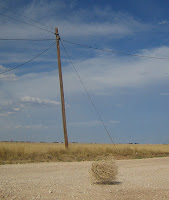Of course, we all know that by itself FTTP is just glass in the ground. What matters is what you do with it. How much traffic is travelling across this network? Happily, Japan is one of the countries that tracks and reports this, so we can take a look. [Health warning - what follows is in part based on Google Translate, so there is the possibility I've missed a critical footnote].
Here's Japan's traffic per fixed broadband line since 2004:
- Bandwidth usage is growing, but not exponentially. The growth rate in the last year was 17%
- This is despite the fact that there was major adoption of FTTP in this period - as a share of fixed broadband it rose from 36% at the start of 2007 to 67% today (data here)
- Usage is low relative to the line capacity - 54 Kbps vs the average speed of 10.8 Mbps measured by Akamai, representing a utilisation of 0.5% (though certainly it will periodically spike far higher than this for any given line)
- It's also not the case that fibre delivered massive growth in per-line upload traffic - this peaked in late 2009, and has fallen almost 30% since then
It seems fair to call this a little underwhelming. One factor may be that consumers are choosing to use the LTE mobile network rather than fixed connections. Indeed, it seems some consumers are seeing LTE as a complete substitute. According to Informa:
"NTT East and NTT West have been forced to slash their FTTH prices for new subscribers by an eye-watering 34% from ¥5,460 (US$66.70) to ¥3,600 per month to try and re-ignite their subscriber growth and stop the outflow of subscribers to cheaper LTE mobile broadband services."Be that as it may, given that other countries are spending billions to replicate Japan's superfast fibre-optic infrastructure, presumably Japan is streets ahead of what's typical usage on copper networks? Another country that publishes usage stats is Australia, where the current government is investing massively to build FTTP (though 96% of households are still on cable or DSL).
Here's how Japan and Australia's per line traffic compares:
Source: Australia fixed lines and traffic from ABS. Japan as above
Note: Japan units converted from average kbps to monthly total GB
As of the end of last year, Australia's per-line fixed broadband traffic was roughly 70% higher than that in Japan. Despite a network that is undoubtedly technically inferior to Japan's, Australia is seeing robust growth. Of course all traffic is not created equal, but it seems fair to guess that Australia is getting more value out of the fixed internet than Japan is. By contrast, Japan's very expensive investment in FTTP doesn't seem to have delivered that much.Network infrastructure is only as valuable as the usage it enables. Is it time for Japan to start envying Australia?



No comments:
Post a Comment